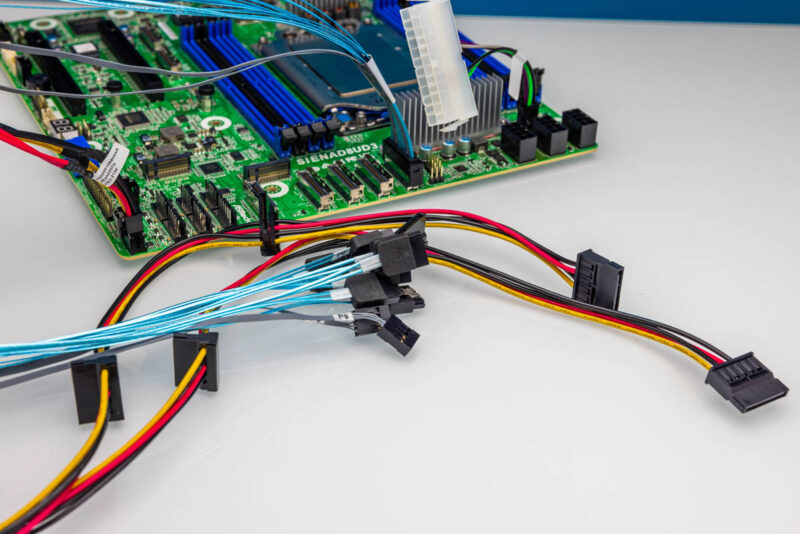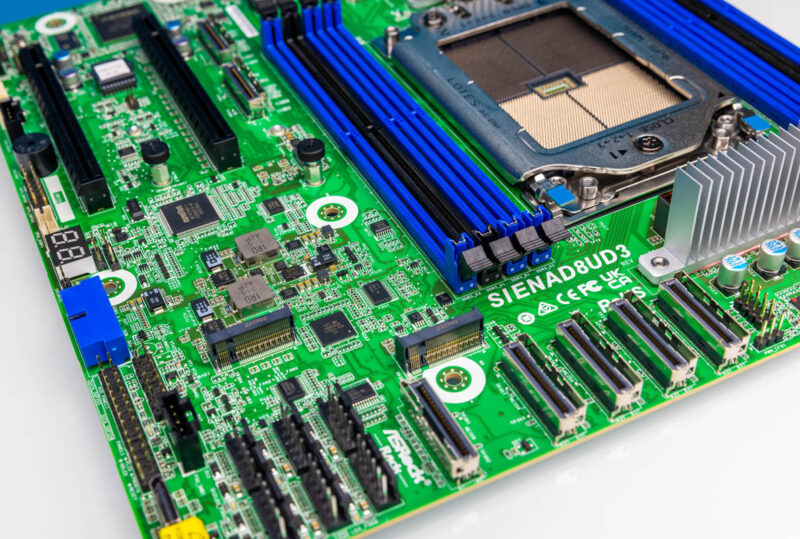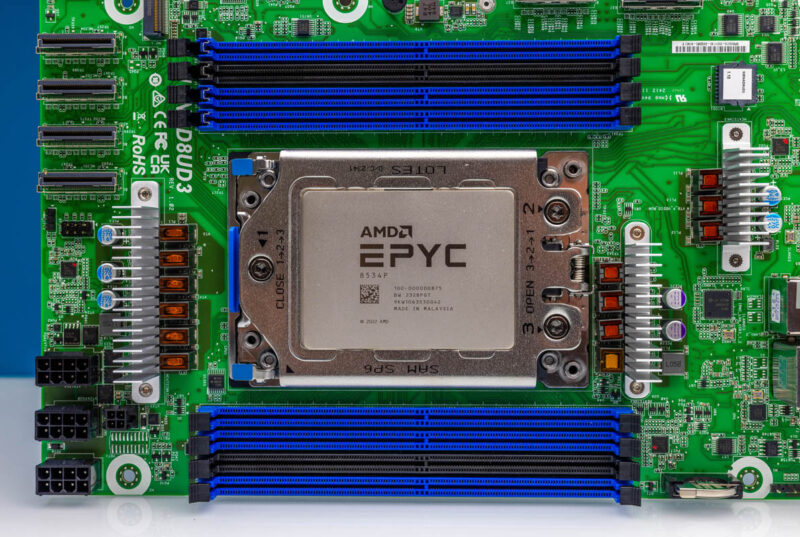Key Lessons Learned
To me, the SIENAD8UD3 is a fascinating motherboard. The AMD EPYC 8004 series, using lower-power Zen 4c cores and tuned for lower TDP, makes sense for many deployments, especially if upgrading from older-generation server parts. Adding the extra memory slot certainly helped one reach memory per core parity fairly easily. It is just adding two slots, but they are important slots.

Then comes the MCIO connectors. I think that some folks will look at this motherboard and wish there were more standard PCIe slots. On the other hand, having cabled MCIO PCIe Gen5 is really flexible, albeit a bit more expensive for adding to a system. The ability to use breakouts to get a lot of SATA is a really interesting use case since one can host 32x SATA III devices without using a HBA while adding multiple high-speed NICs and NVMe devices.

The MCIO to SATA cables are $30-60 each, but that is not too bad considering it is a lower power and lower cost option than adding a HBA.
Final Words
I am not sure if AMD intended for the EPYC 8004 series to be used for storage servers, but it feels like a great fit in a platform like this. One can get plenty of memory, cores, hard drives, SSDs, and networking into a relatively small footprint with a single socket server using an exteneded mATX motherboard.

Part of me wishes this had SFP28 or SFP+ networking onboard, but perhaps that would go against the concept of having extreme flexibility on the configuration side. In reality, 25GbE is a PCIe Gen5 x1 interface, so it would likely mean “wasting” lanes by using lower-speed networking like that. Still, if you have dreams of a compact and very customizable system, the ASRock Rack SIENAD8UD3 has just about everything the AMD EPYC 8004 platform can offer.




Looking at the diagram P4(which is used for the network connectivity) could have exposed a dual SFP+ or 10GbaseT and connected to the BMC without too much issue.
Would love to see a power consumption chart that shows full idle and heavy load behaviour
s/exteneded/extended/
> “Part of me wishes this had SFP28 or SFP+ networking onboard, … has just about everything the AMD EPYC 8004 platform can offer.”.
The ASUS S14NA-U12 is a 8004 board with 2 teamable 25 Gbps SFP28 (Broadcom) on a CEB, 12″ x 10.5″ (versus a Deep Micro-ATX 9.6″ x 10.5″).
I have been waiting for the ASUS S14NA-U12 board for the better part of the year since your review late 2023, do you have any Intel on where the hang up is with the lack of its official release? My main purpose of this new board is a clean up of my 4 hyper-v hosts down to a single (downsize).
See, now this, this is a server mobo.
Any chance for power consumption chart that shows full idle and heavy load behaviour?
I have a Supermicro case that is ready foe this board. It has 32 or so HDD bays
Now I need to find MCIO to old style SAS ports.
The idle-power consumption would be very nice to know!
Just curious, but couldn’t the motherboard support 36 SATA3 drives? The 4x MCIO plus the 1x OCuLink? Or am I missing something?